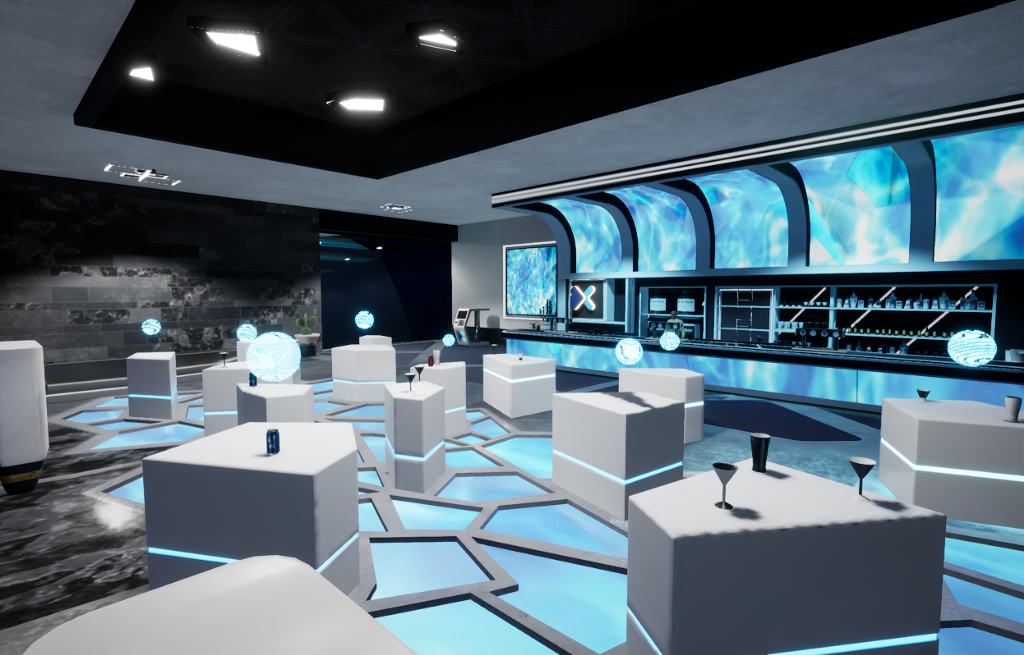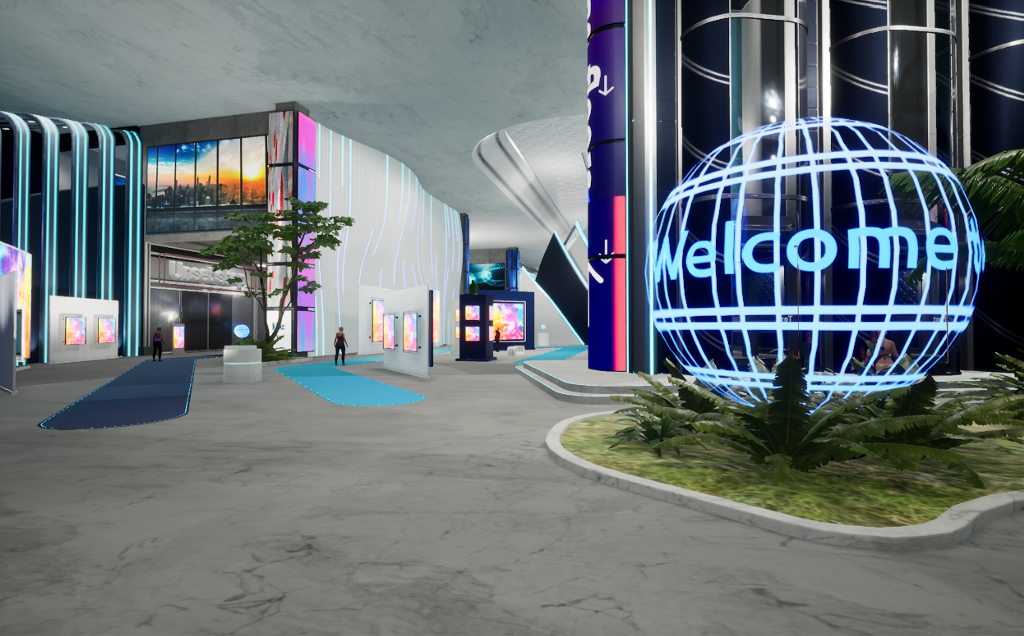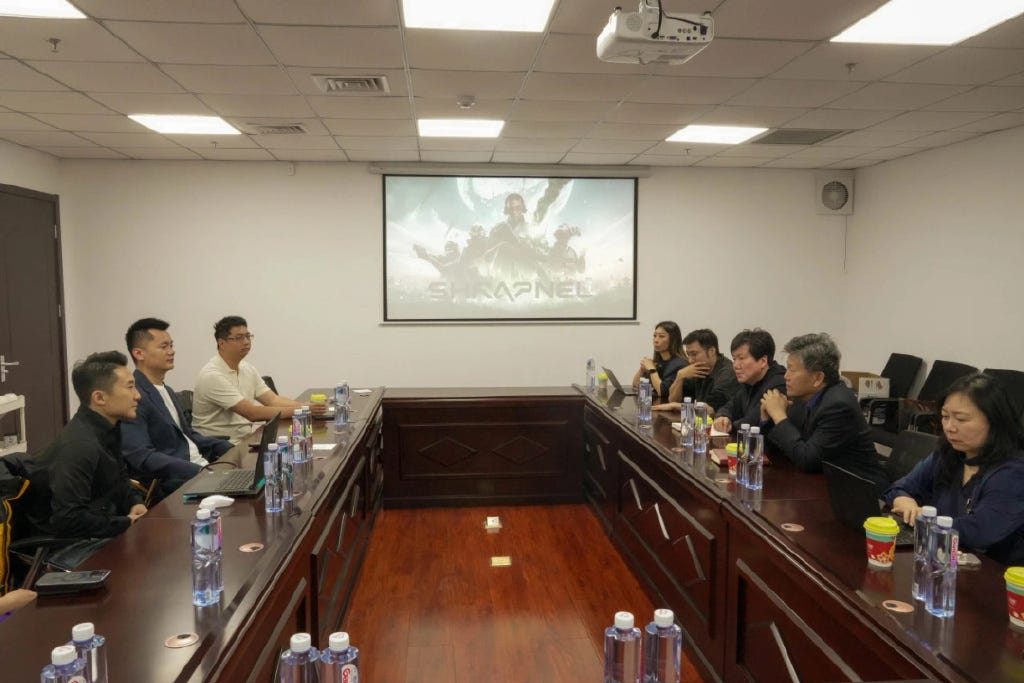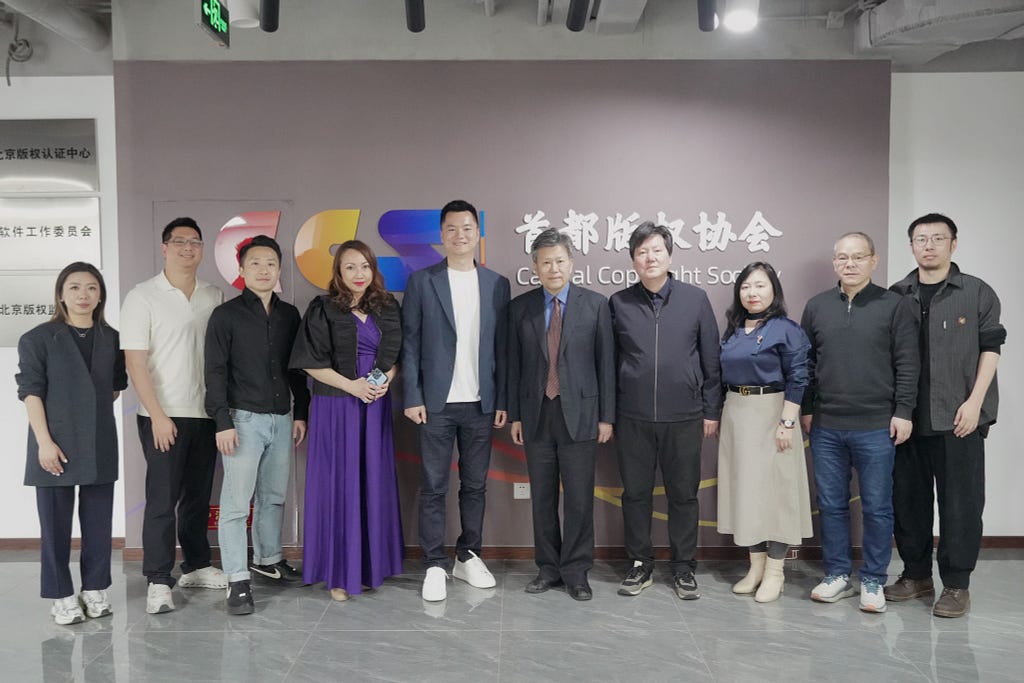Why the metaverse needs to be decentralized
With companies like Meta, Walmart and Microsoft showcasing their takes on the metaverse, we want to highlight why we think decentralization is critical for a thriving metaverse ecosystem, and how we approach development to ensure making the decentralized metaverse a (virtual) reality.

A short introduction to the metaverse
The metaverse can be seen as a “successor” to the internet. A new medium for people to express themselves, socialize, have fun and consume information.
Humans are a social species. We like to interact with others. But the interaction opportunities so far have been limited. The promise of the metaverse is to offer a persistent world for individuals to socialize in, within a shared space that produces a stronger social presence. In addition to these social aspects, the metaverse encompasses a full virtual economy. With an increasing amount of time being spent online, and in the metaverse, economic activity will take place there at a growing ;rate. Having a job in the metaverse will sound less crazy in 5 years.
The metaverse is a new medium for social and economic activity
Ultimately, we don’t know what the metaverse will be. Will we mainly replicate events from the physical world in VR, such as concerts, museum visits, and scuba diving? Will new, surreal experiences, for example flying or experiencing life as an animal, take the center stage? Most likely, it will be something we are not even thinking about right now.
What we do however know, and can influence, is the foundation the metaverse will be built on.
Metaverse principles
(according to Matthew Ball)
- Persistent: Like the real world, there are no resets or pauses, the metaverse continues indefinitely.
- Synchronous and live: the living experience exists consistently for everyone, in real-time
- Togetherness and individual sense of social presence: Everyone can experience the metaverse together (specific place, activity, event) at the same time, while each individual is there as themselves, with their own goals and rationality
- Fully functioning economy: Individuals will be able to create, own, invest, sell and be rewarded for their work
- Digital & physical experiences
- Interoperability of data, assets and content
- Created and operated by a wide range of contributors
While all these exist in some shape or form, there’s no product yet that incorporates all of them.
The metaverse and decentralization
With the metaverse as a successor to the Internet, we should learn from our mistakes that lead us down the current path, where we have limited control over our data, privacy and sovereignty. Users are not the customers of web2 companies, they are the product. Users are manipulated just so companies can sell their attention to the next highest bidder in the form of an ad. With the metaverse feeling more realistic and allowing for deeper interactions and relationships, the stakes are even higher this time.
A VR headset always knows where you are looking at. Imagine how valuable that data is
The first years of a new medium are formative. Early decisions shape the future and often have irrevocable consequences for us and the generations after. Building the metaverse on a decentralized foundation now determines how we will live our digital life in years to come. Since we are moving more and more towards digital worlds, “digital life” increasingly just means “life”.
Let’s look at the metaverse principles again, especially points 4, 6 and 7, and explore how decentralization relates to them.
The world is built on property rights. Without them, economic activity and innovation are stifled. If something can be taken away from you any second, why create it? Since the metaverse needs a fully functioning economy, ownership needs to be solved. NFTs act as a transparent record of ownership and authenticity. Built on top of decentralized networks, no third party can arbitrarily take them away. This establishes trust in the system. Only then are people willing to invest their time and capital into the metaverse. The result is a thriving economy beyond what we have seen so far ($50B spent on virtual goods per year).
NFTs further allow for automatic, transparent revenue sharing (royalties). Instead of rent-seeking companies extracting the value generated by their users, web3 puts everyone on a more equal playing field. Creators get paid a fair share of the value created by their work. With aligned incentives, the community is motivated to actively participate and contribute. This form of bottom-up, community-powered movement can scale faster and further than a single company ever could. This is needed to build a full-scale metaverse that fulfills all the principles described by Matthew Ball. Web2 companies were only able to build parts of it.
With trust and incentives in place, the full economic value of the metaverse can be unlocked. For example, consider the secondary gray markets that exist for most video games. There’s user demand for these services, but the market takes place outside of the developers’ reach. Therefore, they can’t capture recurring revenue from secondary sales. Incorporating the user demand directly into the product and business model is a win-win for all participants. Developers earn sustainable revenue, while creators and users can move away from dodgy, fraud-ridden marketplaces.
Another important element of the metaverse is interoperability. Without it, there won’t be a seamless metaverse experience where different worlds overlap. For example, your assets are stored on a blockchain and you can access them through different interfaces. This stands in contrast to the “walled gardens” of web2.
How to build for decentralization
Build on a neutral layer
A decentralized layer 1 establishes trust in ownership rights. For example, Kalao is building on Avalanche
NFTs
NFTs are a suitable ownership layer, residing on a neutral layer 1. We are using NFTs for virtual shops and slots and (user-generated) 3D assets such as avatars. By giving creators ownership of their creations, we give the control and we support a flourishing virtual economy. Using open NFT standards like ERC-721 allows for interoperability.
Distributed computing
Running on a decentralized computing network reduces reliance on a single entity
Governance
Giving users a voice in the future development ensures that all stakeholders are heard and leads to better alignment between protocol and community. KLO holders will be able to vote in the DAO.
Kalao Citadel
The Kalao Citadel will be our first step towards the metaverse. The Citadel will be a persistent place for people to meet others via text and voice chat, explore NFT galleries and interact with their favorite protocols. Anyone can own a place in the Citadel, either a shop or a slot, and customize it to their liking.

To foster an individual sense of social presence, we made avatars a top priority. Characters have a full-scope skeleton system to make them feel real. Users can customize face, body, clothes and accessories.
We are working on many new features that will support social and economic activity in the growing Kalao metaverse.
For more information about the metaverse, Piers Kicks wrote an excellent piece about it that you can read here


